
Yellowstone National Park is a massive chunk of land in Wyoming’s northwest corner. It was the first natural park established, and it manages to combine scientific appeal and natural beauty to become a bucket list item for many in the states. Unlike most people, we did not plan our trip around visits to Yellowstone and Teton National Parks. We were originally in Wyoming to hike the Wind River High Route and the parks got tacked on to the end of our trip. I’m so grateful that we included these two pinnacles of Wyoming tourism because the parks were quite memorable and contrasted well with the weeklong backpacking that came before.
This is not a guide. To read our guide/itinerary for exploring the park click here.
Day 1 – Entering The Park:

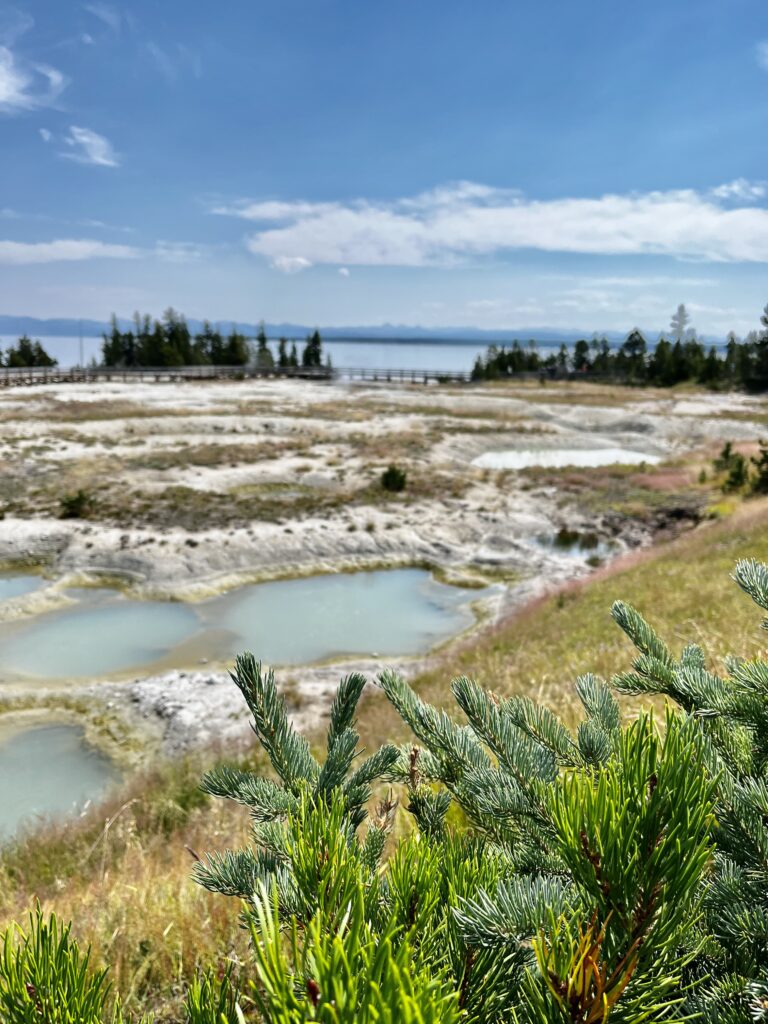
After entering Yellowstone from the south and driving to the West Thumb Geyser Basin, we walked in loops on the boardwalk, marveling at how the hot springs bubbled into Yellowstone Lake. A guided group of kayakers passed on the water, enjoying the basin from a different perspective. All was peaceful, if not a little crowded. Though we were impressed by the unique sight at the West Thumb, in retrospect it was rather dull in comparison to what we saw later.
Lone Star Geyser:
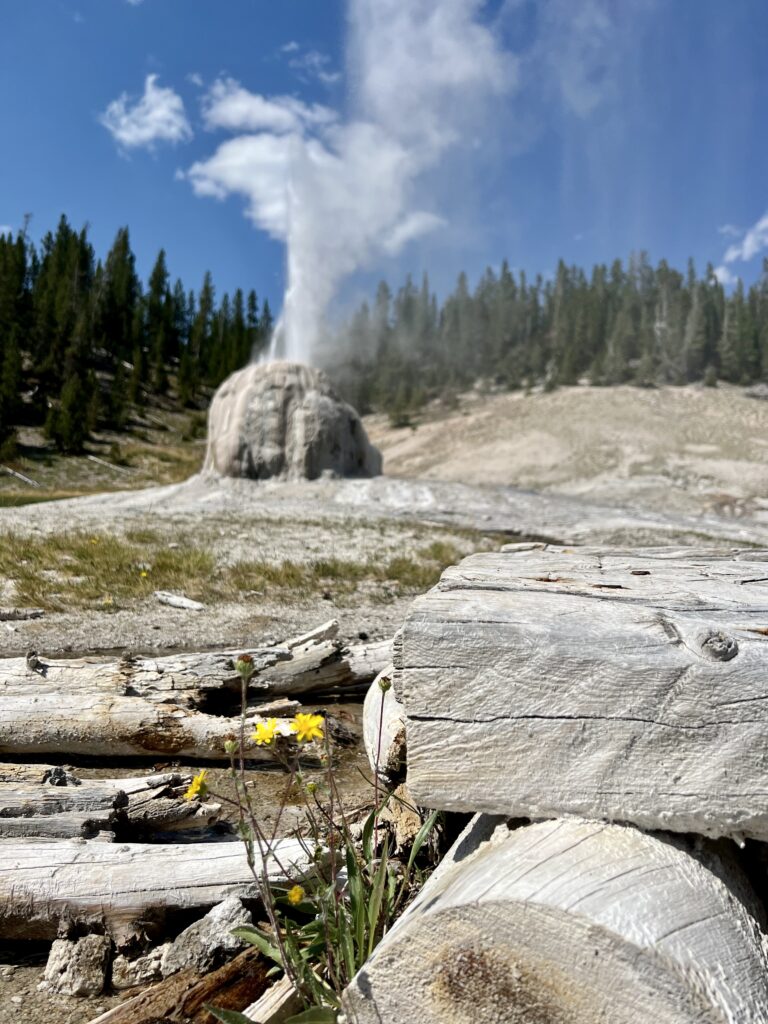
We drove to the trailhead for Lone Star Geyser, stopping along the way for a picnic. Yellowstone has designated “picnic spots” where parkgoers can drive into a loop and occupy a campsite-like spot with a picnic table. Having a secluded picnic spot in the woods was luxurious for us as tourists from the east coast.
When we arrived at the turnout for Lone Star we found a flat gravel path through the woods. There was not much to see, so biking would’ve been a great option. We hiked slowly as we were still recovering from running the Teton Crest Trail. Just before we arrived at the geyser, a gentleman who was going in the other direction told us it had already erupted. According to prior knowledge, it would be another three hours before another eruption. We came upon the geyser five minutes later, a bit disappointed, but soon after our arrival, we were treated to an incredible eruption that lasted almost half an hour. The spray reached 45 feet in elevation. Later, I learned that the geyser tends to have a minor eruption just before the major one. I guess we got lucky!
We checked into our campground at Grant and enjoyed a small fire with our meal.
Day 2 – Geysers, Geysers, and Hot Springs
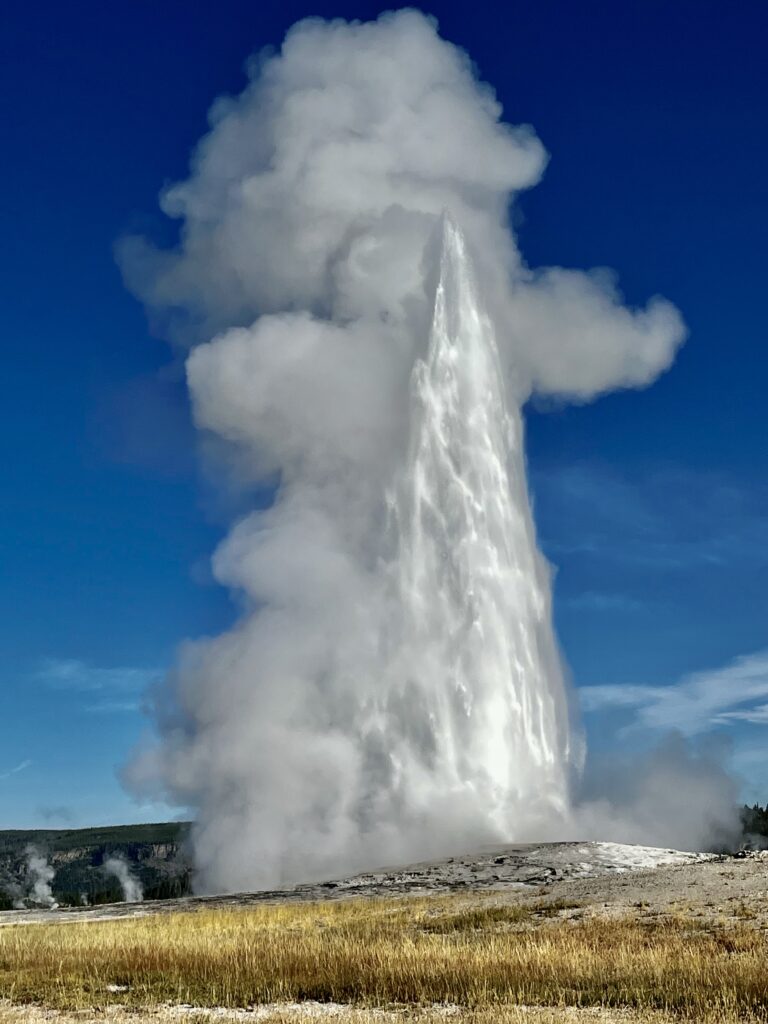
We woke up early and packed out of camp by 6:30 am. It was a bit of a drive to Old Faithful, where we got breakfast. Few people were out, and the geyser erupted just after it was due. It’s amazing how high these geysers can shoot water.
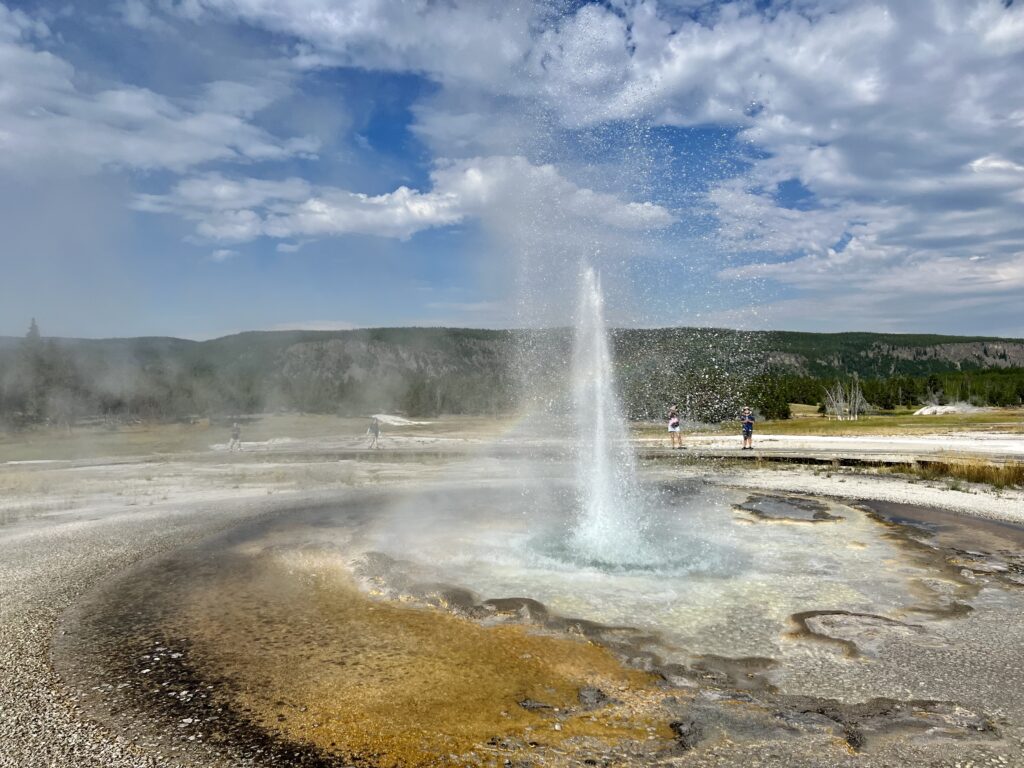
Next, we hiked to the overlook, though it wasn’t much to look at, so we continued toward Solitary Geyser. Solitary was enchanting with its rainbow coloring and random ripples. It never erupted until scientists attempted to insert a pipe into it in the early 1900s. They hoped to design a new water filtration system and had little knowledge of geysers. The pipe triggered a small eruption that happens every five minutes.
Soon after, we were walking through the Upper Geyser Basin on boardwalks and enjoying views of the different geysers and pools.
Biscuit and Black Sand Basins:
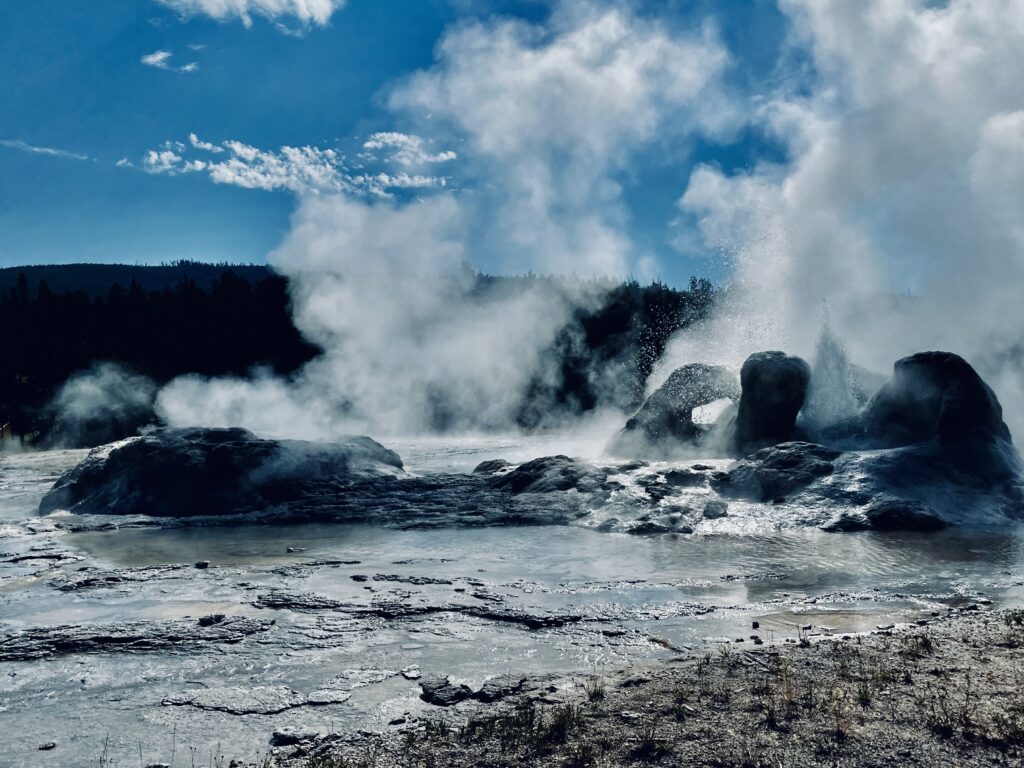
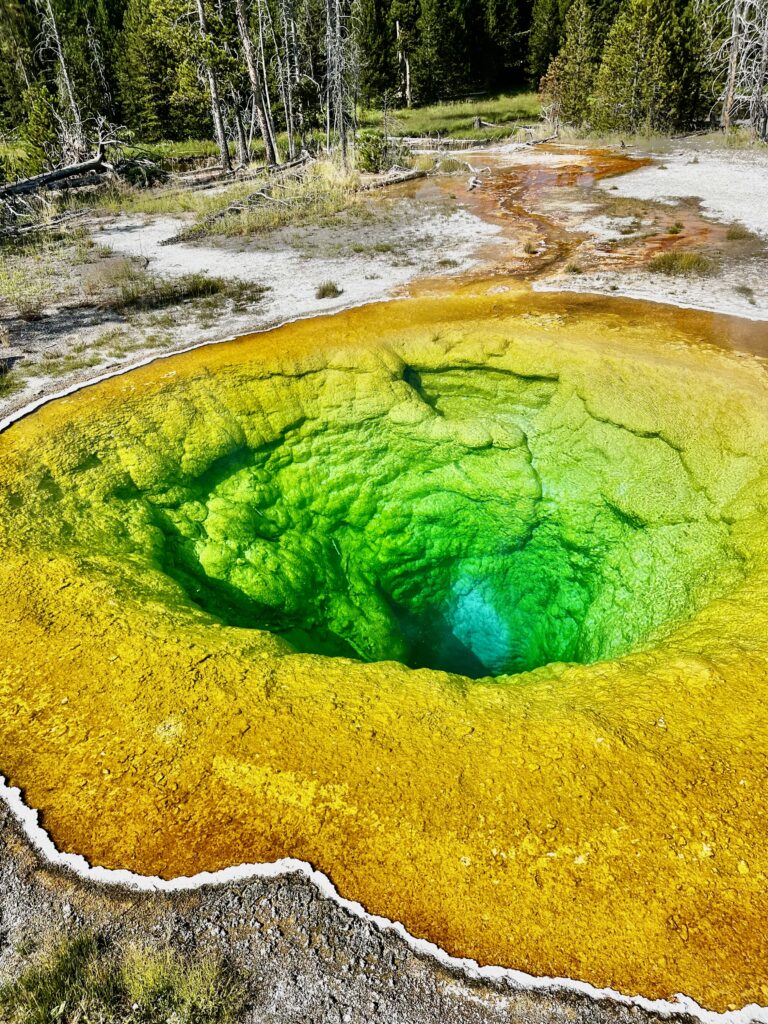
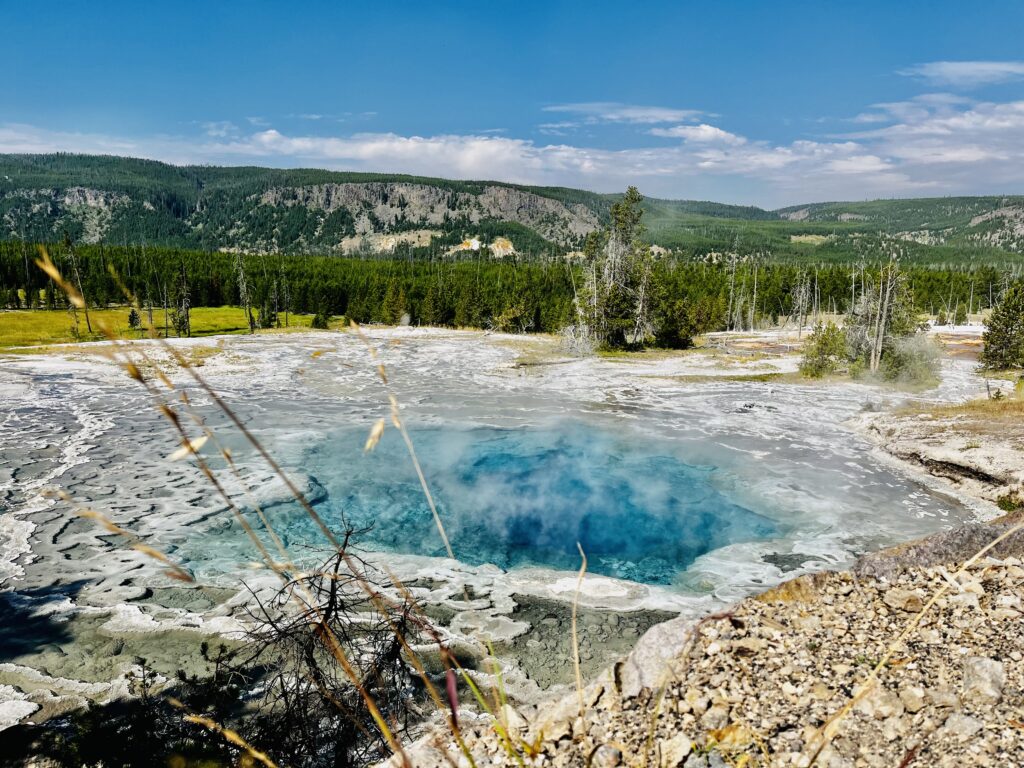
From there, it was a quick walk into the beautiful Biscuit Basin. On our way, we passed the alluring Morning Glory Pool and the Saphire Pools. Biscuit Basin got its name when one of the geysers erupted and flung “biscuits” of rock around the basin.
We continued our loop back across the road, past more geysers, and down into the Black Sand Basin. The long out and back we did from Punch Bowl Spring (an attraction on the main Upper Geyser Basin loop) to Black Sand Basin were rather unnecessary. It would’ve been easier to visit by car, but we were just enthralled by our route through the major points of interest in the area.
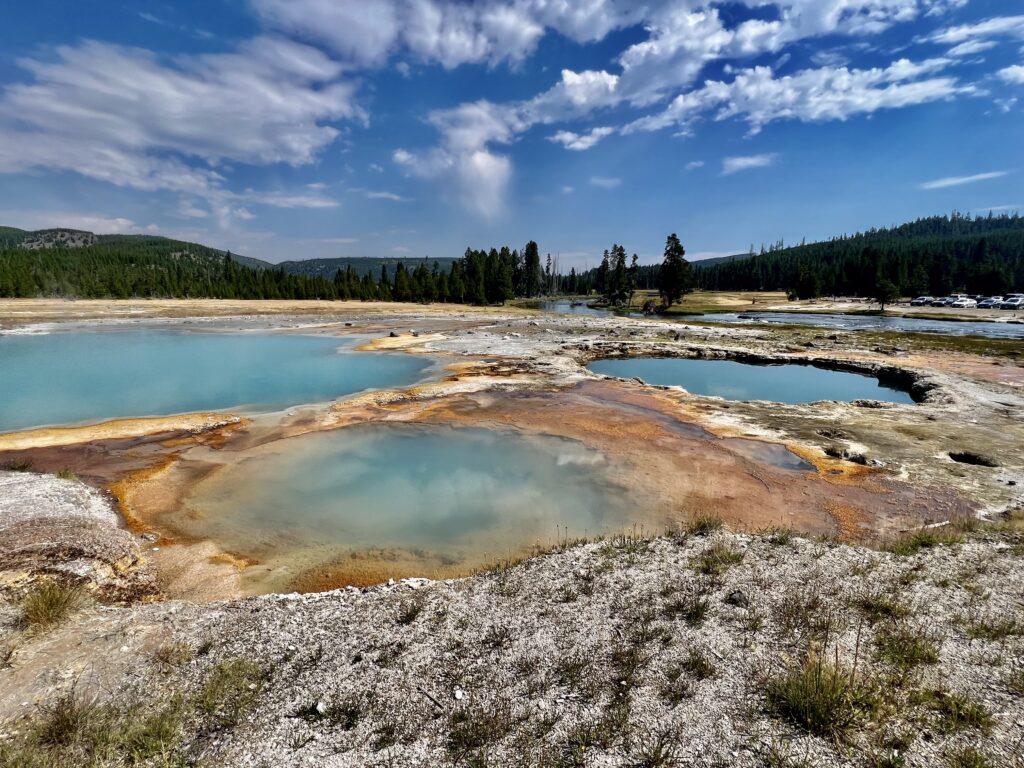
Black Sand Basin had some steam vents that blew sulfuric-smelling, warm mist at us. It was rather small compared to what we’d expected, but worth visiting. We continued our walk back on a paved path to the Historic Old Faithful Lodge. The lodge is the largest log building in the world and also serves good ice cream! While we were at the visitor center, Old Faithful erupted again!
The Grand Prismatic Spring:
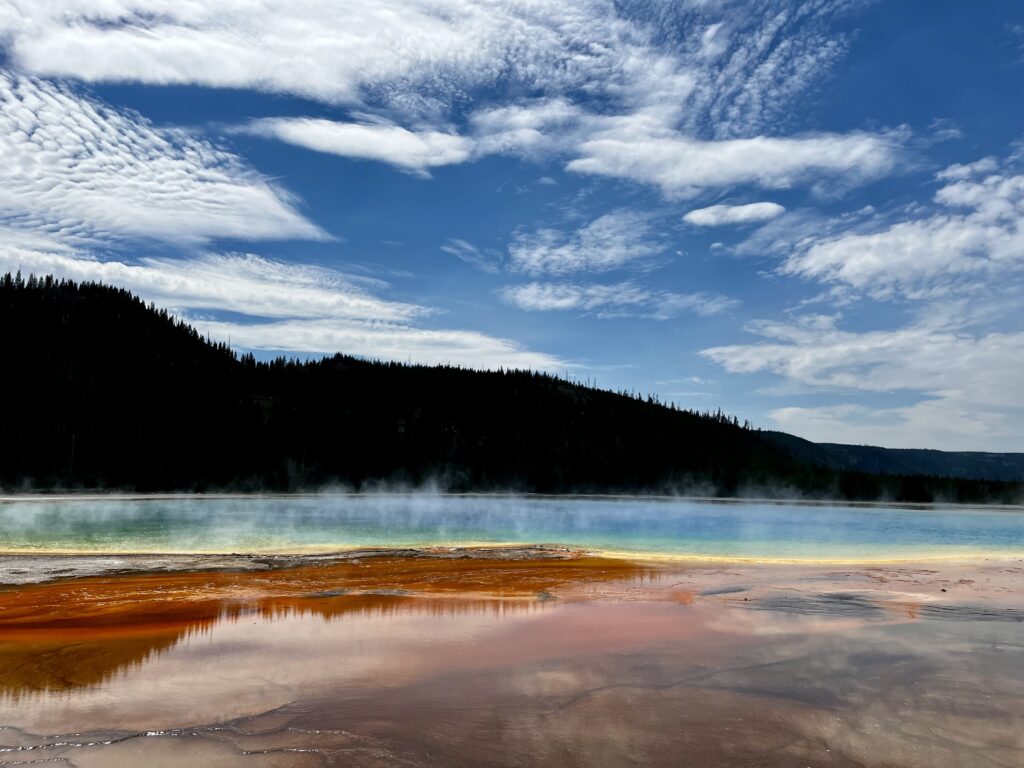
After a short drive, we made it to the Grand Prismatic Spring. We had hoped to hike to the overlook, but it looked very congested at dead noon. Besides, we had gotten our hiking fix with nine miles already in the bag that morning. Strolling around the spring would suffice. The Prismatic was definitely the most “grand” hot spring we’d seen thus far.
After, we visited the Lower Geyser Basin. The geysers were nothing special, but we saw some mud pots. Mud pots are bubbling pools of mud that occasionally throw clumps a few inches into the air. This was a new type of feature for us.

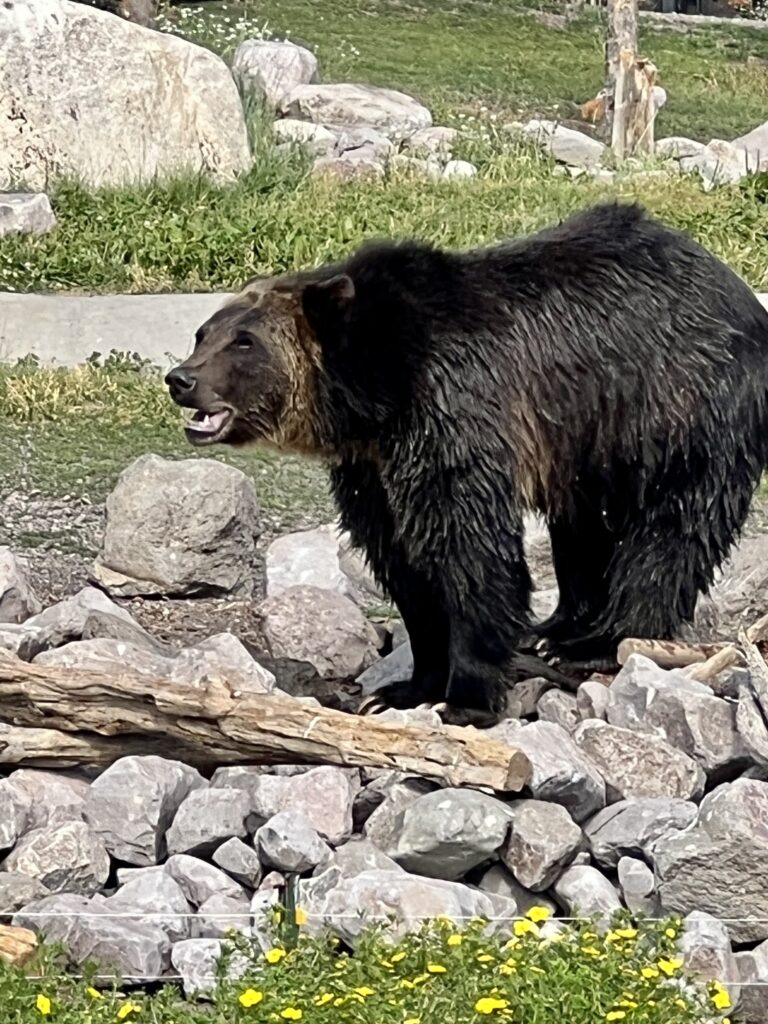
Since we had extra time, we drove to the Grizzly and Wolf Discovery Center in West Yellowstone, MT. There was a lot to learn about the animals, but the best part was watching the different bears, wolves, and river otters in their (artificial) habitats. The animals kept in the center were healthy and majestic. We found some dinner in town at a satisfactory local burger shop, then drove to Madison Campground.
Day 3 – Geyser, Mountain, and Canyon:
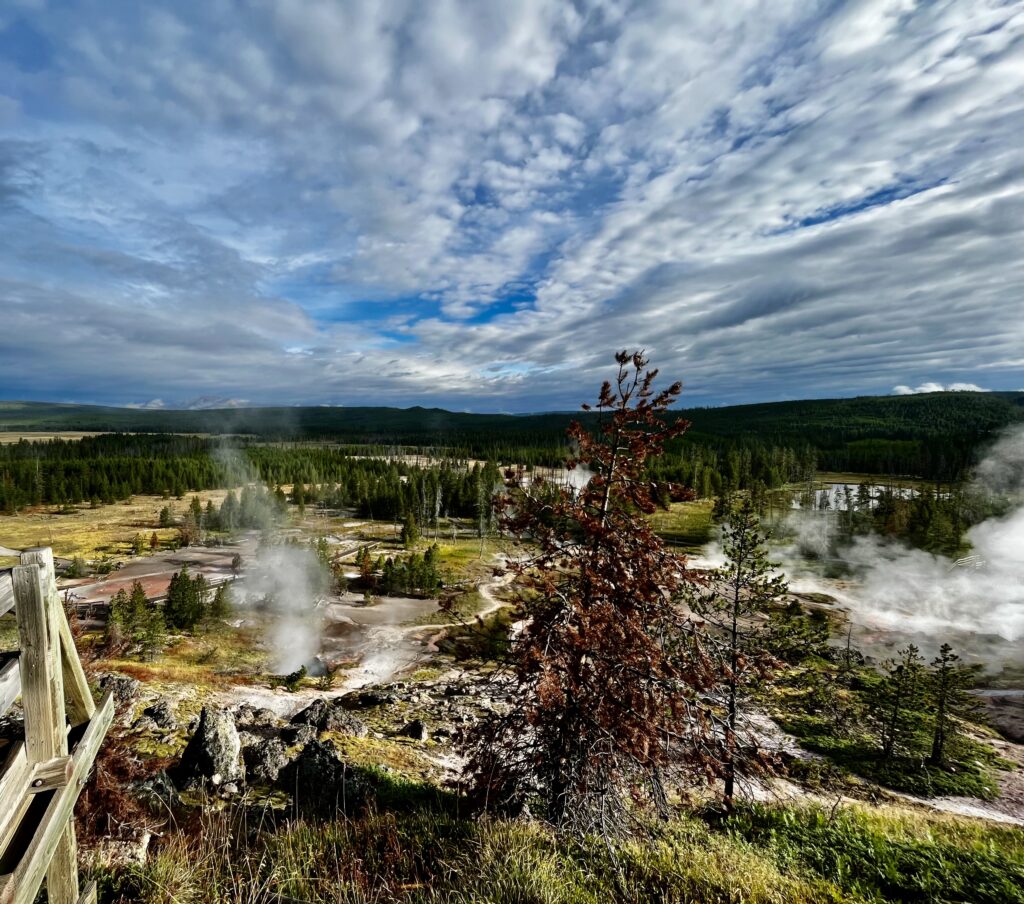
Our third day in the park started at the Artist Paintpots, a quick stop on the way to Norris Geyser Basin. We walked the short loop trail and snapped a couple of photos. The landscape here was photogenic due to the colors spilling out of the springs which contrasted with the pines and gravel of the valley floor.
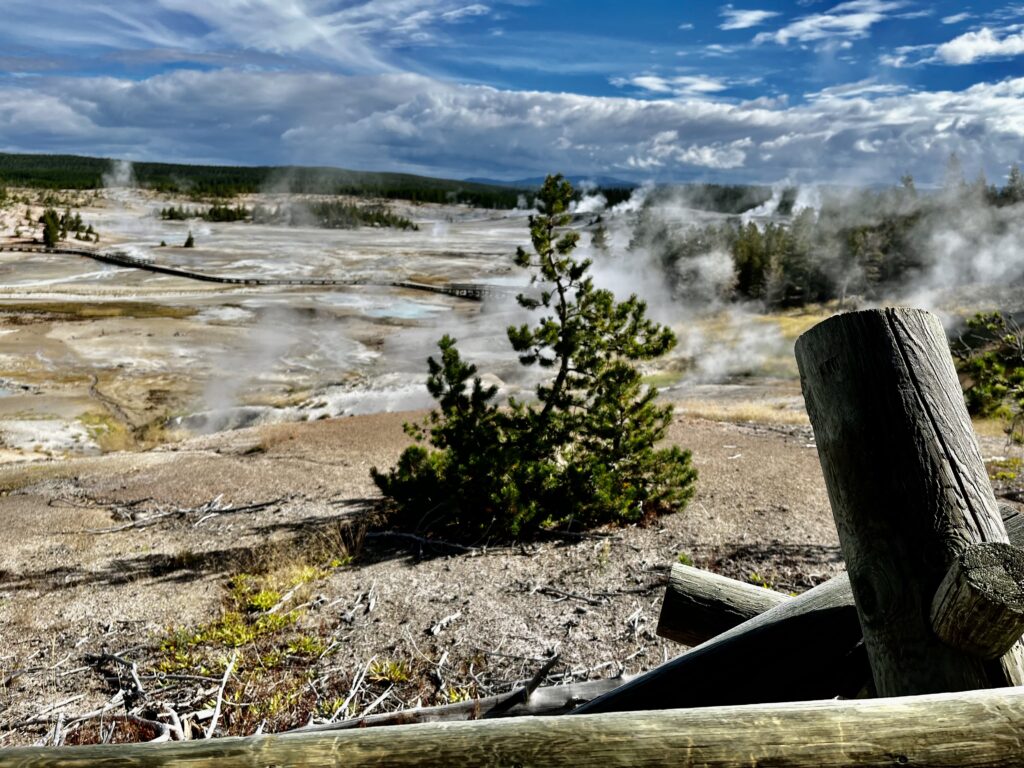
Norris was unique compared to the other geyser basins. It had an otherworldly feel: like we were exploring a lifeless planet. Ironically, one square foot of the geysers in Norris holds more bacterial life than the earth’s entire human population. As the hottest basin in the park and the oldest one, it was memorable enough.
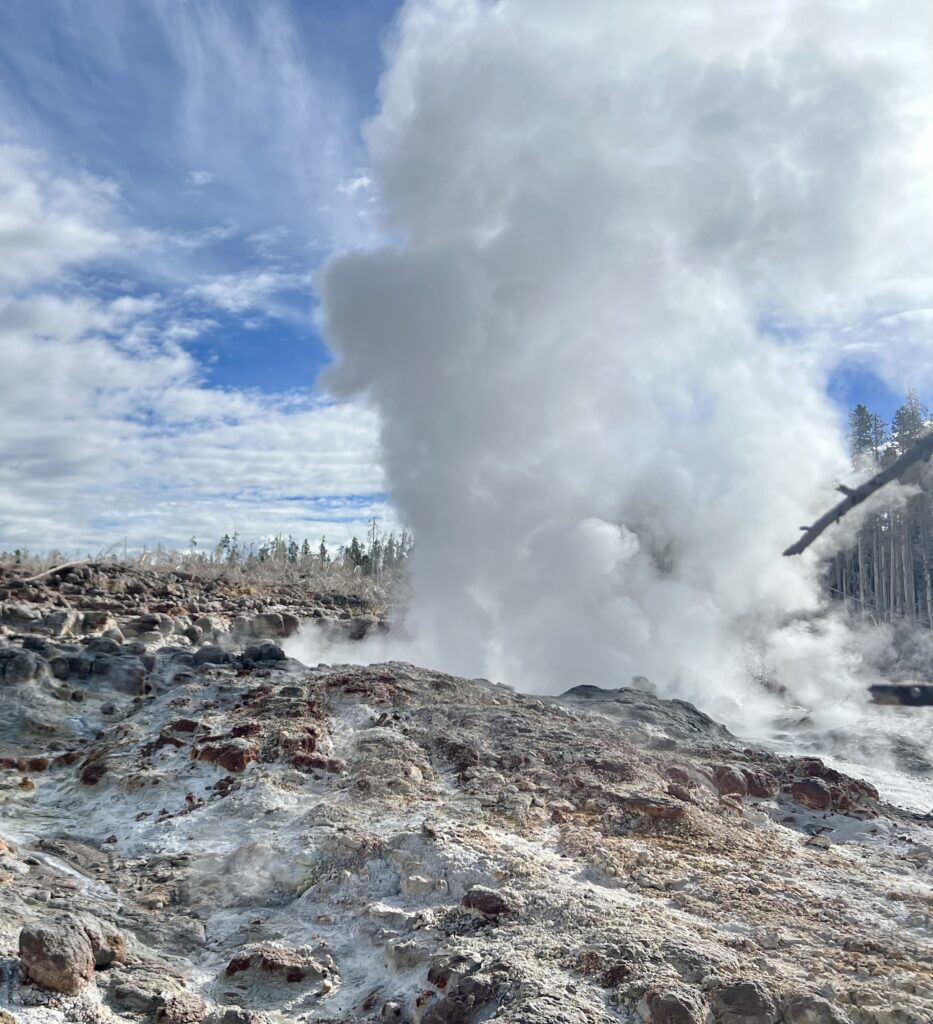
Next, we stopped at the Museum of the National Park Ranger. We took time going through the exhibits and talking with the retired ranger on duty. The museum was located in an old-time ranger cabin. The ranger was surprised by how captivated I was by the limited exhibits, but I found them very well done. There was a lot to learn.
Mammoth Hot Springs to Tower Roosevelt:
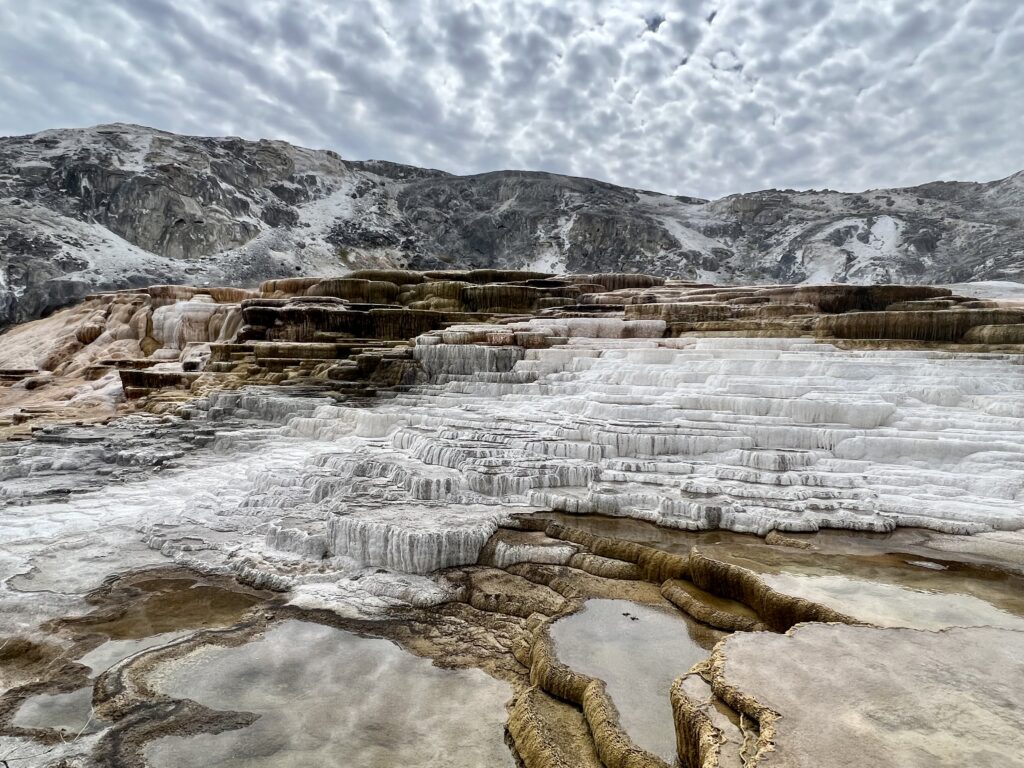
The drive to Mammoth was scenic, and we had good views of Bunsen Peak. We had planned to climb Bunsen, but with my recent knee injury and Kathryn’s sore foot, it was not to be. We parked in the upper parking at Mammoth and walked along the boardwalks for about an hour. The travertine deposition falling in terraces out of the cooler springs had bright white ivory coloring. Yellowstone always manages to make geothermal features interesting with a special twist to each one, Mammoth especially.
After some lunch, we hit the road toward Blacktail Plateau Drive. There was none of the promised wildlife along the pleasant dirt road, but we got impressive views. We also saw a petrified tree.

Unfortunately, due to flooding, the Lamar Valley was closed in 2022. In the spring, the rivers had swelled and receded, taking sections of road with them. We planned to spend extra time in Hayden Valley to supplement the missed wildlife opportunities. We’d been in the bison capital of the world for three days and hadn’t yet seen any bison.
Grand Canyon of the Yellowstone
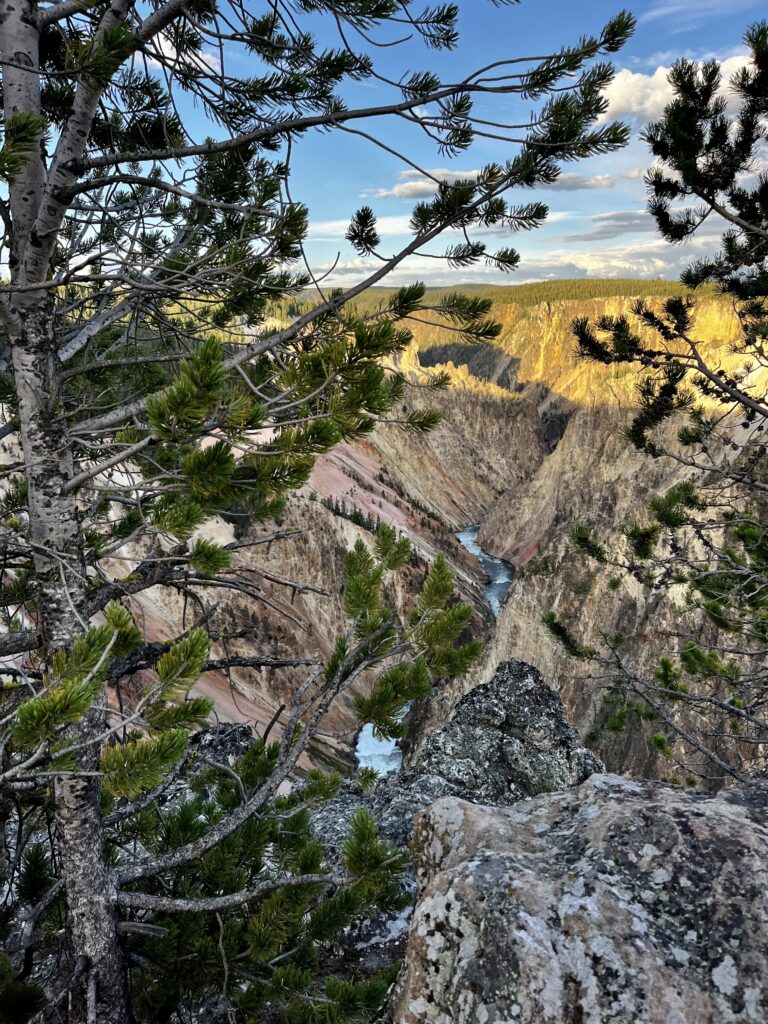
Now we were in the scenic section of the park! The road wound around big buttes as we approached Mt. Washburn. Calcite Springs was a pullout with a canyon view. It was made more interesting by the massive patch of calcite deep on the canyon base. We took a spur up Chittenden Road to the Washburn Trailhead. I was considering taking the hike, but the rationale we had at Bunson applied here. Signs warning about readiness for grizzly encounters also caught us off guard, as we did not feel prepared for a spur-of-the-moment jaunt through some grizzly bear’s territory. Instead, we enjoyed the stellar views over the Yellowstone Ecosystem to the Absarokas in the east as seen from the trailhead.
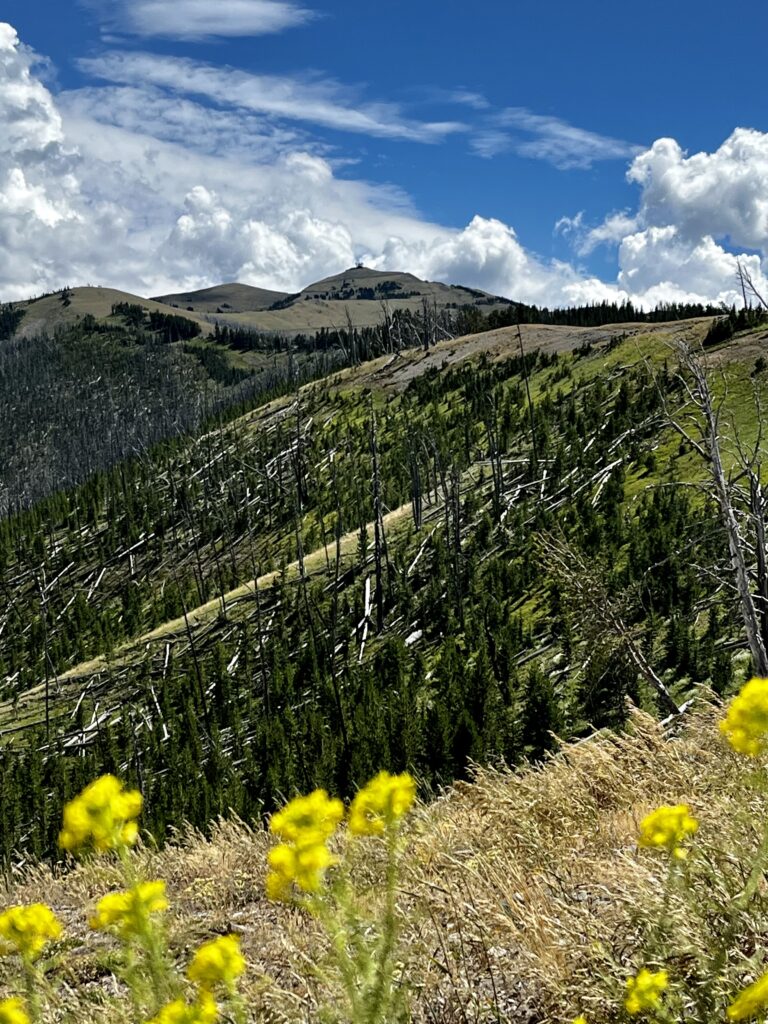
We got to Canyon Campground early and set up camp. Canyon Village even had showers! After dinner and a fire, we set out to drive the north rim. The Grand Canyon of Yellowstone was glorious at sunset, so we stopped at all of the overlooks. Deciding on Inspiration Point as our sunset viewing spot.
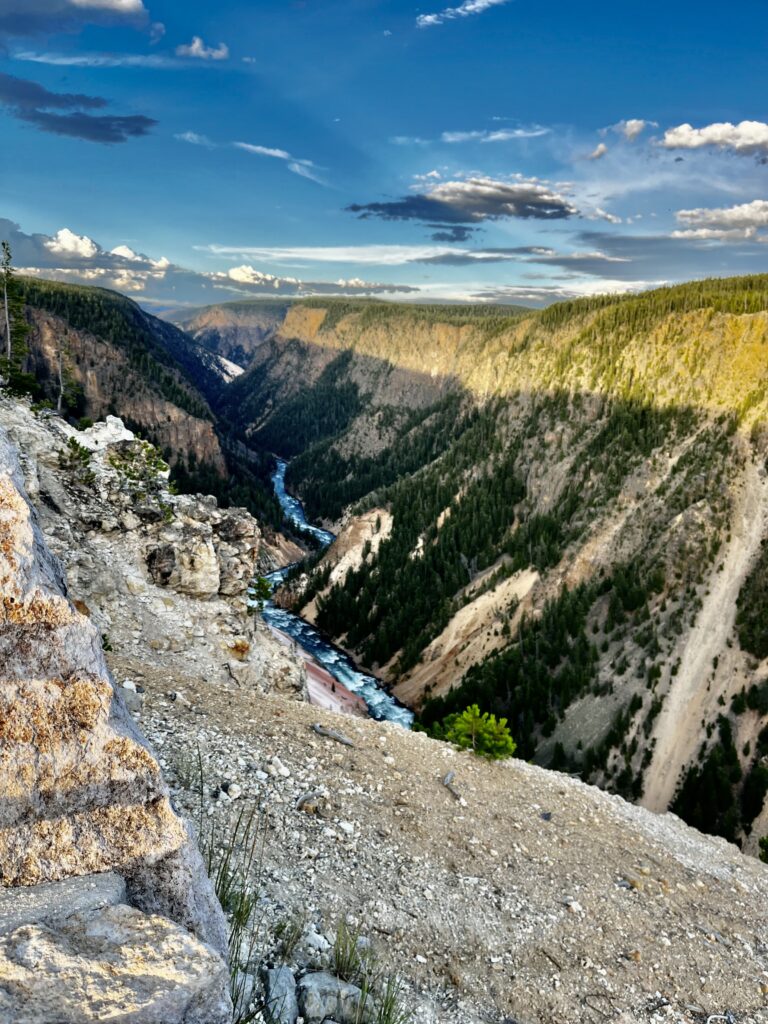
Day 4 – Bison Galore:
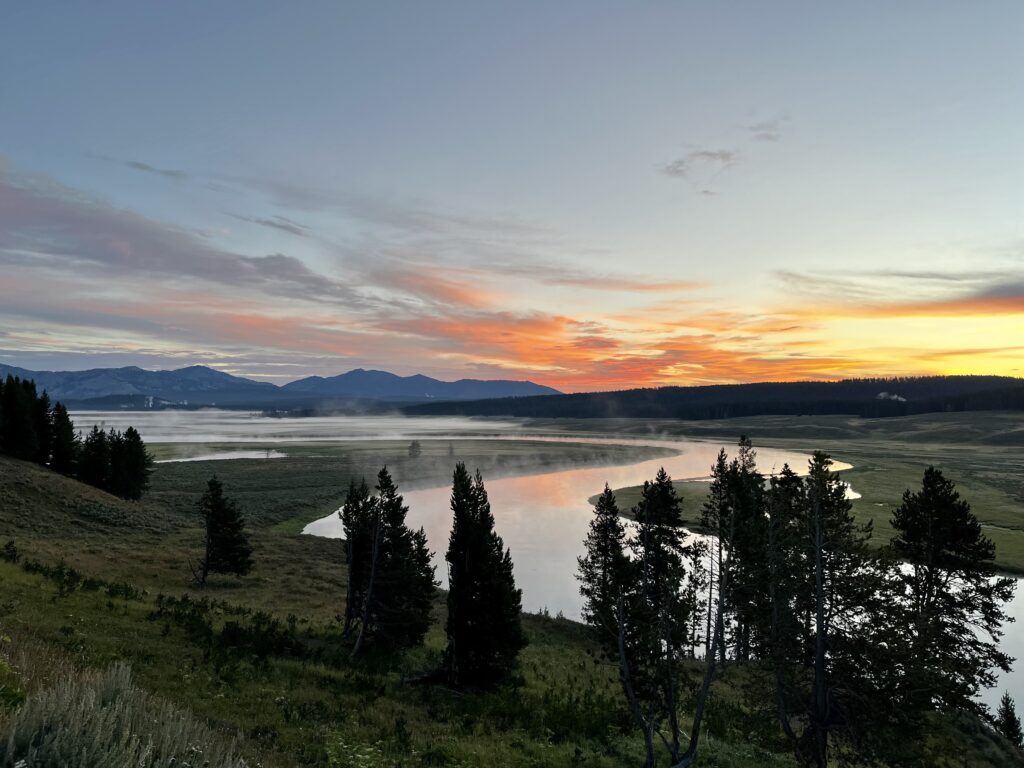
We were out early, hoping to see some bison in the Hayden Valley on day four. We actually beat the bison and got a terrific sunrise but had to wait an hour until the bison decided to wake. Despite our best efforts, no wolves or bears were spotted. After a drive down the road, we were met by hoards of bison, clogging up traffic.
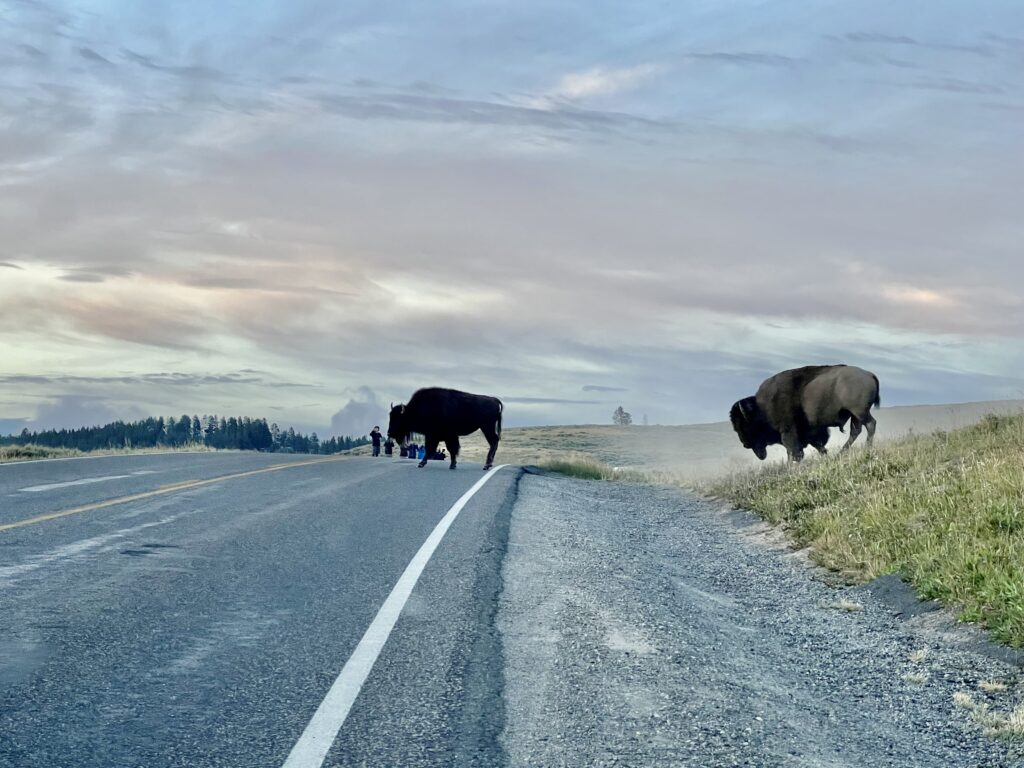
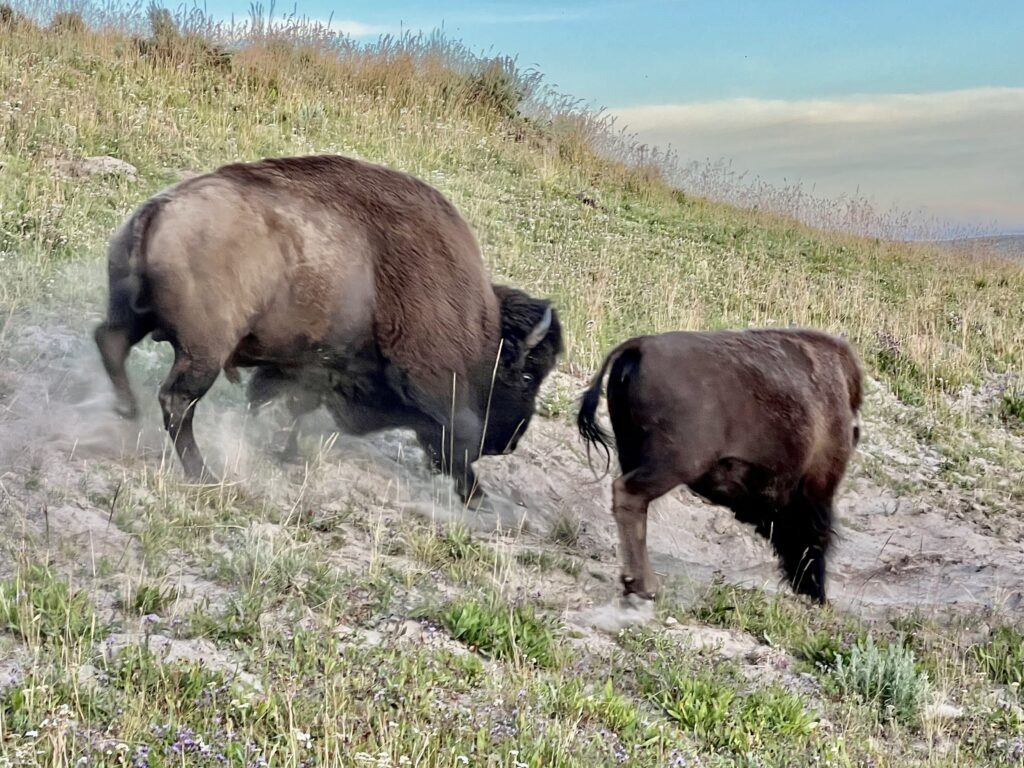
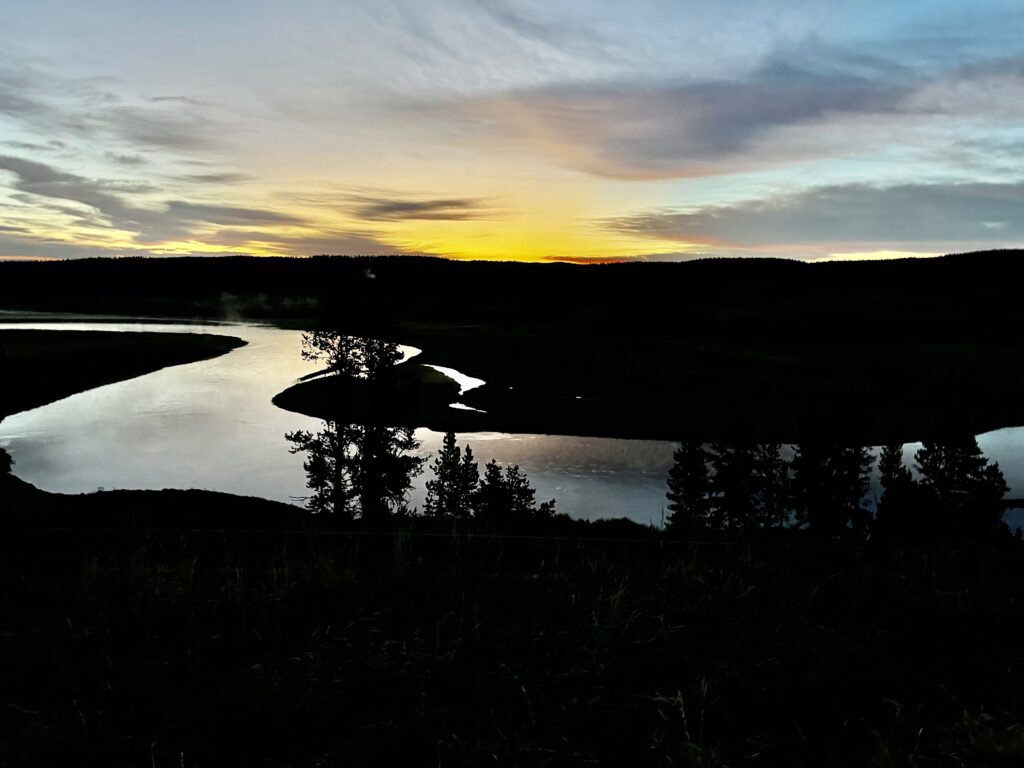
Next, I wanted to hike some of the spur trails off the north rim. We wandered to the brinks of both waterfalls and spent some more time at Grandview Point.
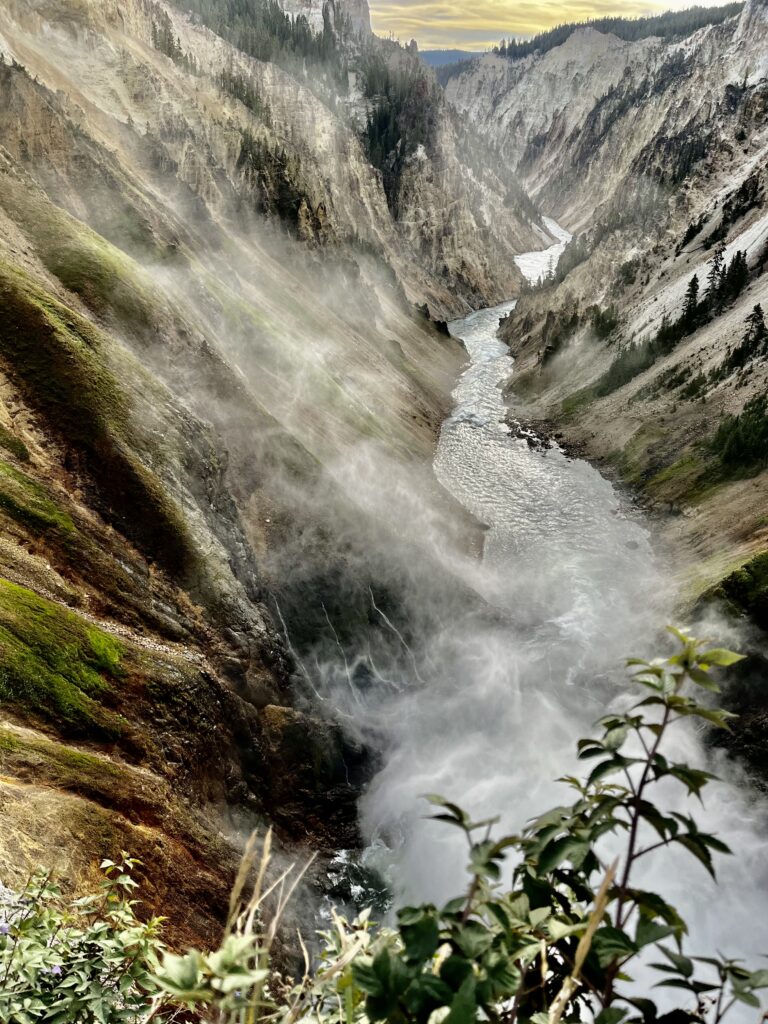
After a mediocre breakfast in Canyon Village, we were off to the south rim to hike the rim trail to Artist Point. The views along the way were pleasant, and it was good to relax and reflect. Our second drive through Hayden was equally impressive, with more oblivious buffalo blocking the road and a quick stop at the Mud Volcano. The Mud Volcano’s name describes it perfectly: a mud pot with extra mud-throwing power. There were many geysers and springs alongside the volcano, but we bypassed many. I guess we were spoiled by all the geysers we’d already seen.
Yellowstone Lake:

We spent some time by Yellowstone Lake at the visitor center. (There was a sandy beach.) Neither of us swam, as Yellowstone Lake is not known for its warmth. Then, we drove to an overlook with a sign that told us the land across the lake was the most remote place in the lower 48! That’s something to ponder!
It was very early to get into camp, so we stopped at Lake Village. There was more delicious ice cream to be had there. Bridge Bay was a modest campground, but we were glad to have a tent site. After a relaxed afternoon in camp, we had an early dinner and attended a fascinating ranger program. The ranger gave an engaging presentation on the relocation of wolves to Yellowstone. I always recommend ranger programs as something to do in the parks. They rarely disappoint and always intrigue me.
Finally, we finished our day in Hayden Valley (visiting for the third time!!) where it had started. There was an impressive thunderstorm across the plains as we drove back to camp.
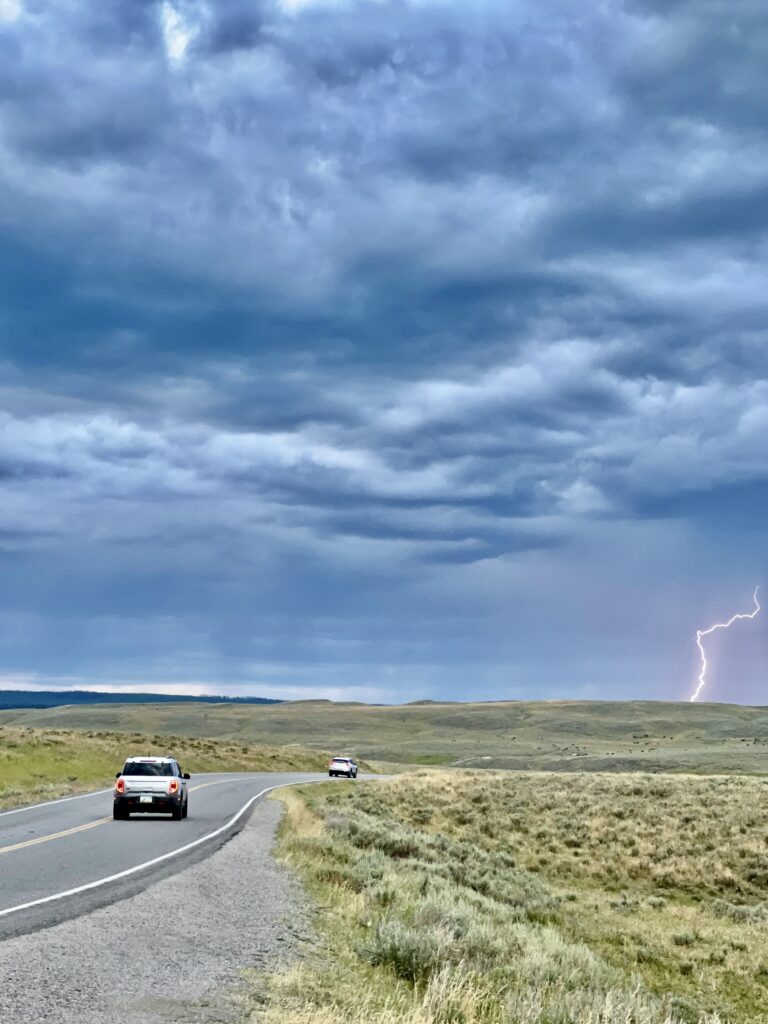

Day 5 – Leaving the Park:
We woke early to get driving. As we were leaving the campground, an elk bounded across the road. Kathryn was excited because she hadn’t seen one yet on our trip. The closest town to the east entrance is Cody, Wyoming, our destination for the day. As we drove out of the park, a bunch of cars pulled over. We stopped to see what was going on and saw our first wild Grizzly of the trip! It prowled a rise above the road, completely oblivious to the excited humans recording its every move.
On our drive out of the park, over Absaroka passes, we talked about the fullness of the trip. We’d hit every part of the park extensively. It felt like a success. We continued on to Cody to visit some of the well-known attractions there, chiefly the Buffalo Bill Center for the West and the local rodeo. Both the museum and the show were worth seeing. The Center for the West was actually five museams ranging in topics from native art to guns to Buffalo Bill’s act. The rodeo pushed our comfort zone with its brash Wyomingnite style, but we were glad we went.
Reflections:
This was an incredible trip, and one I would recommend to anybody. It had a little bit of everything. We probably only needed three days in the park, but we may have used more time if we had hiked more or if Lamar Valley had been open. I feel satisfied with Yellowstone and strangely don’t feel the need to come back. I guess we covered it well. View the park website here to get more of a sense of Yellowstone. View my 3-Day Yellowstone Itinerary based on the insights gained from this trip for more details.
Pingback: Ultimate Itinerary for Three Spectacular Days In Yellowstone
Pingback: Ultimate Itinerary for Three Spectacular Days In Yellowstone -